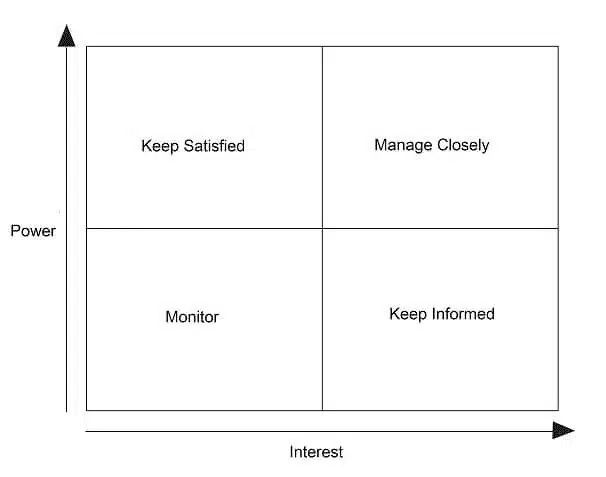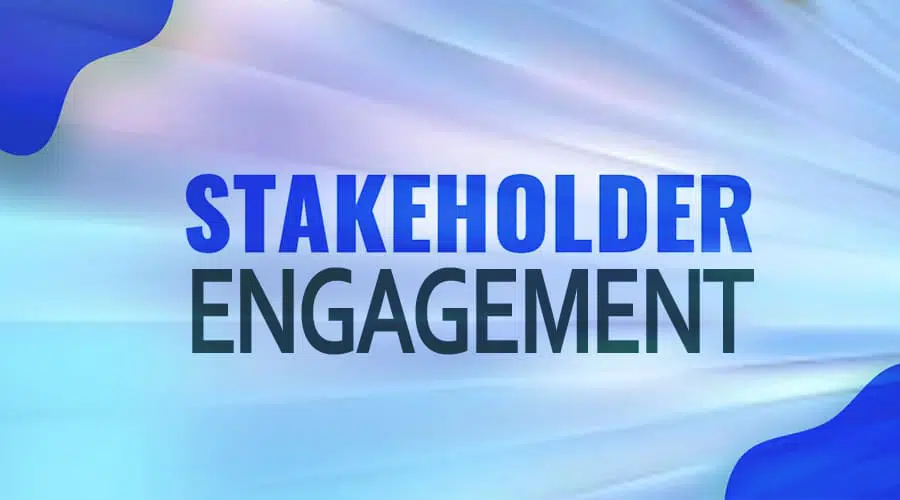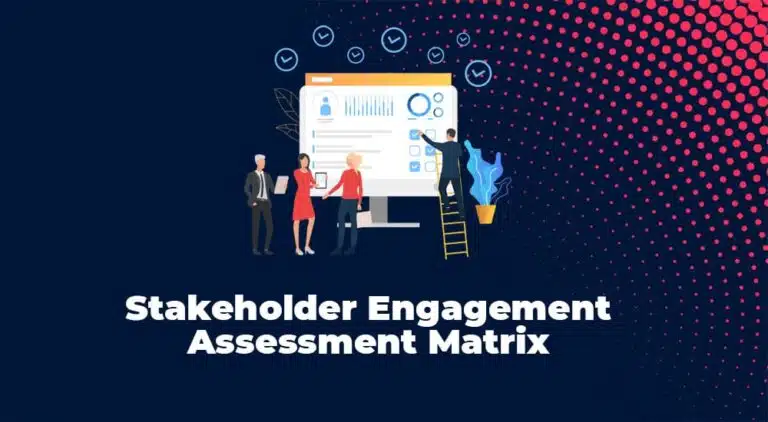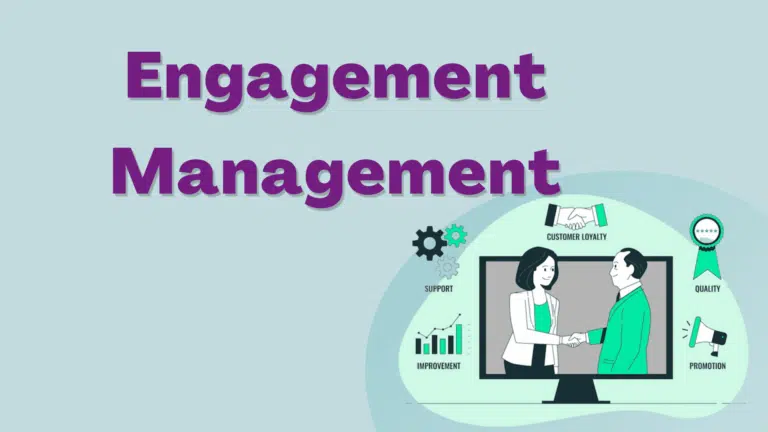Today, we will discuss stakeholder engagement in project management.
Stakeholder engagement is key to the project’s success as the project is about managing stakeholder requirements, and therefore, they must be engaged and kept satisfied throughout the project life cycle.
Stakeholder Engagement
Stakeholder engagement is a process of managing stakeholders to win their support for the project.
This process helps lets organizations proactively consider the expectations of stakeholders and fulfill requirements. It helps builds relationships and trust.
Stakeholder engagement is vital for project success. This process helps you understand stakeholder expectations, fulfill their requirements, and complete the project with minimal obstruction.
Stakeholders can be internal or external, and you must interact with them throughout the project lifecycle. When interested groups or individuals feel respected and honored, they will support you.
Stakeholders’ engagement is an initiative-taking process.
How to Conduct Stakeholder Engagement
Communication is the primary stakeholder management tool. The PMI’s 2013 Pulse of the Profession report asserts that “the most crucial success factor in project management is effective communication with all stakeholders.”
Planning communications and engaging stakeholders are two closely related processes in project management. ‘Plan communication management’ outlines how and when you should communicate with each stakeholder according to their requirements.
Stakeholder engagement has four processes:
- Identify project stakeholders.
- Plan stakeholder engagement.
- Manage stakeholder engagement.
- Monitor stakeholder engagement.
Identify Project Stakeholders
In this process, you identify your project stakeholders. This process begins when the stakeholders sign the project charter and ends when you have completed the project.
You can use the following tools to identify your stakeholders:
- Expert judgment
- Data gathering techniques
- Stakeholder mapping
- Meetings
This is a continuous process. However, if the project is multiphase, it is best to conduct this process at the beginning of each phase.
The output is the stakeholder register which contains stakeholder information such as stakeholder identification, assessment, and classification.
Plan Stakeholder Engagement
Planning stakeholder engagement lets you define your approach to engaging stakeholders based on their power, influence, interest, and impact.
This process provides you with a detailed plan for managing each stakeholder.
The following tools are helpful in the process of planning stakeholder engagement:
- Expert judgment
- Data analysis technique (assumption and constraints and root cause analysis)
- Decision making
- Data representation technique
- Meetings
Planning stakeholder engagement is a continuous process.
Conduct this process at the beginning of each phase of a multi-phase project.
You can repeat the process when you observe a change in the attitude of stakeholders, as you identify new key stakeholders, or if there is a change in your organization.
The output of this process is a stakeholder engagement plan that includes strategies to engage individuals or groups of stakeholders. Depending on the project’s requirements and stakeholders’ expectations, it can be highly detailed or broadly defined.
Power Interest Grid
The power/interest grid is a valuable tool in this process and helps you analyze your stakeholders.

From the grid, you can conclude that:
- You must manage the high-power and high-interest group with the utmost care.
- You must keep the high-power and low-interest stakeholders satisfied.
- You should keep the low-power and high-interest stakeholders informed.
- You should monitor the low-power and low-interest groups, as they require the least effort.
Continuously monitor your stakeholders for status changes. You never know when a low-power stakeholder will become high-power and influential. Likewise, a powerful stakeholder may become less influential at a later stage.
Manage Stakeholder Engagement
The manage stakeholder engagement process helps you fulfill their expectations and requirements. In this process, you interact with stakeholders and earn their trust and support.
You can use the following tools:
- Expert judgment
- Communication skills
- People skills (conflict management, negotiation, etc.)
- Ground rules
- Meetings
The outputs are project document updates, project plan updates, and change requests.
Key Skills for Managing Stakeholder Engagement
Conflict Management
Stakeholders have different expectations, goals, and values, and because of this, conflicts can arise. The project manager has to resolve or reduce these conflicts by enforcing ground rules, clear role definition, communication planning, and sound project management practices.
Conflict is not always harmful.
The project manager can use disputes to improve team performance with an open mind.
People-oriented conflicts could affect team cohesiveness and relationships, leading to absenteeism, attrition, and failure.
You can address such issues early and privately using a direct collaborative approach.
Cultural Awareness
Acknowledging cultural differences between individuals and groups helps minimize misunderstandings and miscommunications.
Stakeholders feel honored when you acknowledge their individuality and differences.
Negotiation
This is about collectively winning. Things that you can readily negotiate in stakeholder management are workers’ pay, host community compensation, and resources. Alternative Dispute Resolution (ADR) is a better option than prolonged litigation.
Political Awareness
We live in a politically sensitive environment. You must be aware of the political reality of your surroundings. You must acknowledge who pulls power and influence and develop appropriate communication plans to manage them.
Active Listening
Listening is the foundation of effective communication. The project team will listen to and understand the voice of stakeholders, process the information, and respond correctly. When stakeholders feel listened to, they will support you and the project.
Ensure Quality of Information
Information given to stakeholders must be correct, dependable, and verifiable. Incorrect information can affect trust and confidence.
Relationships are key; developing relationships result in increased trust, which in turn means better stakeholder experience.
Accomplish Communication Requirements
All stakeholder’s requirements are different. Some stakeholders may even have access to classified information.
For project sponsors, it is performance reporting; for regulatory agencies, it is an audit/compliance report. Local authorities need information such as social or corporate responsibility correspondence.
How to Communicate
One-to-one discussion is the most effective communication method to get stakeholder buy-in. Reserve this process for a handful of highly influential stakeholders.
A group meeting is the next best communication method.
A project has different meetings, such as retrospectives, project kick-offs, sprint planning, and reviews. In a corporate setting, town-hall meetings help engage multiple stakeholders.
Meetings come with benefits, including developing trust, clarifying issues, brainstorming, redefining risks, addressing resource challenges, and giving explanations.
Communication Frequency
Stakeholder engagement is not a one-time process but a continuous commitment to project success. Agile development approaches have established the need for ongoing customer relationships.
You must be accessible to stakeholders.
As a testament to this, in the UK, extensive and early engagement in the local community and council spared a project to reconstruct the Victoria Bridge from reputational loss, delays, and public disruption.
Monitor Stakeholder Engagement
You must monitor and control your stakeholder engagement. You can update, modify, and tailor the plan as required.
This process ensures that you follow your stakeholder engagement plan and reaffirm its effectiveness.
This process can use the following tools:
- Data analysis
- Decision making
- Communication and people skills
- Meetings
The key outputs are document updates, project management plan updates, change requests, and work performance information.
The Purpose of Stakeholder Engagement
The purpose of stakeholder engagement is to gain support. You should aim to minimize the negative impact and maximize the positive effects. You can change negative stakeholders into positive ones with a proper strategy. Successful stakeholder engagement ensures a fruitful project ending.
Stakeholder engagement can be either broadly defined or it can be thorough. Small projects can have an informal strategy, but bigger projects must have a detailed, well-documented plan.
Pay more attention to your negative stakeholders. They are the ones who can jeopardize your project’s success. However, if you manage them proactively, their impact may become positive.
A stakeholder management strategy is a necessary part of your planning. Without it, you will face issues, and you may fail.
Importance of Stakeholder Engagement
Stakeholder engagement is important for the following reasons:
- It helps build trust with stakeholders
- It helps to improve the working environment
- It avoids costs in delays, boycotts, protests, and litigation
- Allows completing the project with minimal hassle
- Improve the image of the business
Example of Stakeholder Engagement
Years ago, an automobile company tried to open a manufacturing plant in India. They collaborated with the state government and bought the land.
The plant was nearly completed when the local farmers, who previously owned the land, became agitated. They started making new demands, and the opposing parties supported the farmers.
Distress spread throughout the state. Finally, the company had to transfer the facility to another owner. This caused the company a massive loss and embarrassment to the state government.
The automotive company did not consider the local community. The outcome would have been different if the farmers had been involved.
This is an example of poor stakeholder engagement.
Start managing your stakeholders from the very beginning of the project. They will be more likely to collaborate with you, and you may face fewer problems accessing resources.
It is imperative to understand the needs of your stakeholders. Regular communication will help them understand your requirements and feel connected to the project.
Keep in mind that the stakeholder management plan may have sensitive information. Do not share this document, and keep it in a secure place.
Benefits of Stakeholder Engagement
Stakeholder management is important for your project’s success. It helps you get the stakeholders’ buy-in.
Benefits of stakeholder engagement include:
- Keeping stakeholders satisfied by fulfilling their expectations and requirements.
- Avoiding scope creep and mitigating issues that may cause problems for the project.
- Ensuring that you receive full cooperation from the stakeholders with minimal obstruction.
- Mitigating local disruptions and the problems that could cause reputational damage to your organization.
Stakeholder Engagement Vs Stakeholder Management
Until the fifth edition of the PMBOK Guide, the PMI was using the term “stakeholder management,” but in the sixth edition, they replaced the term “management” with “engagement,” as the word “engage” is more appropriate than “manage.”
There is also a key difference between stakeholder management and stakeholder engagement.
Stakeholder management is a process-based approach that focuses on processes. While stakeholder engagement is a people-based approach focusing on building relationships and earning trust.
This is the key reason that pushes PMI to focus on engagement instead of management.
Stakeholder engagement is a bilateral process and involves engagement from all parties. While stakeholder management involves unilateral and bilateral actions. For example, in stakeholder management, you want to avoid managing low-level stakeholders completely, but this is not the case in stakeholder engagement.
Summary
Project management is all about satisfying stakeholder needs and requirements. They can be a threat or an opportunity. Winning the support of all stakeholders is crucial for your project’s success. Stakeholder engagement should start from the initial stages of the project. If you fail to do so, your project may fail.
This topic is important from a PMP exam point of view; therefore, understand it well.
This topic is important from a PMP exam point of view, therefore, understand it well.

I am Mohammad Fahad Usmani, B.E. PMP, PMI-RMP. I have been blogging on project management topics since 2011. To date, thousands of professionals have passed the PMP exam using my resources.





